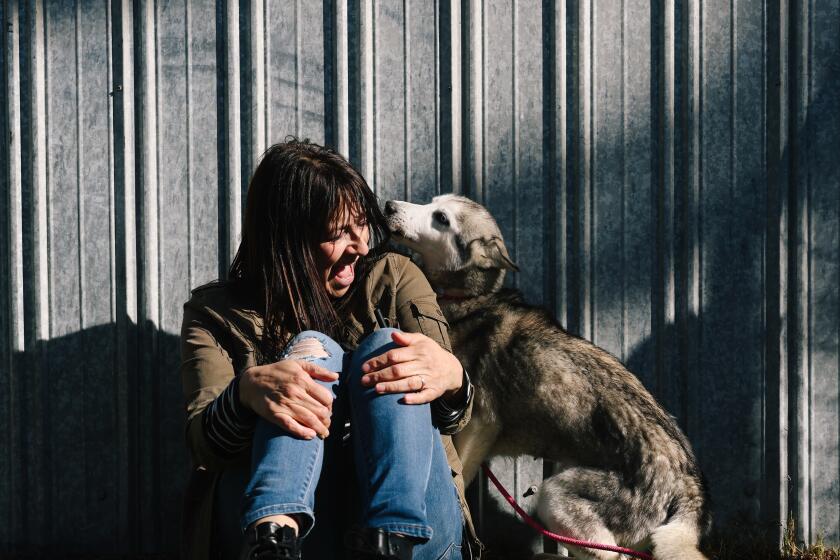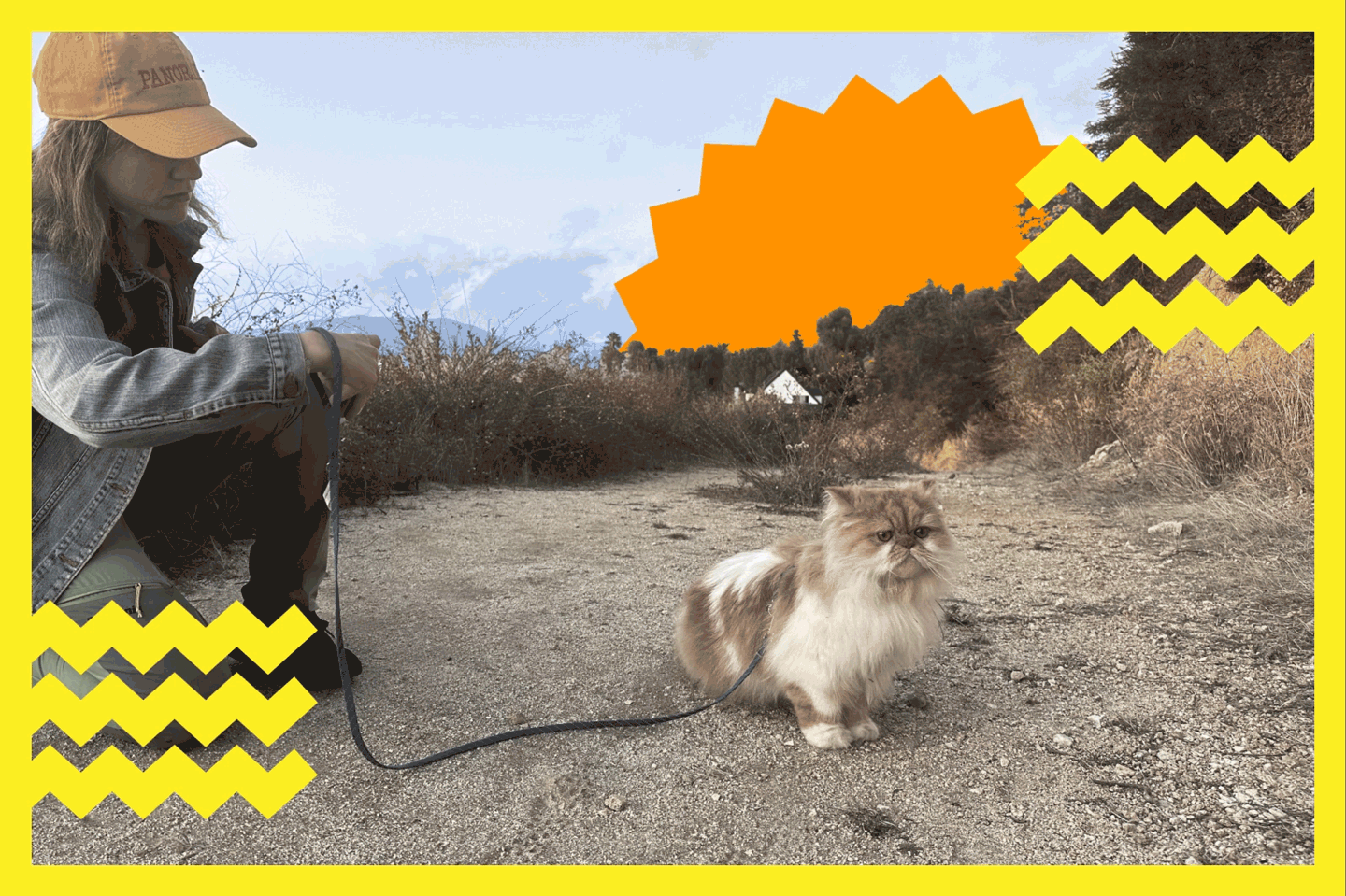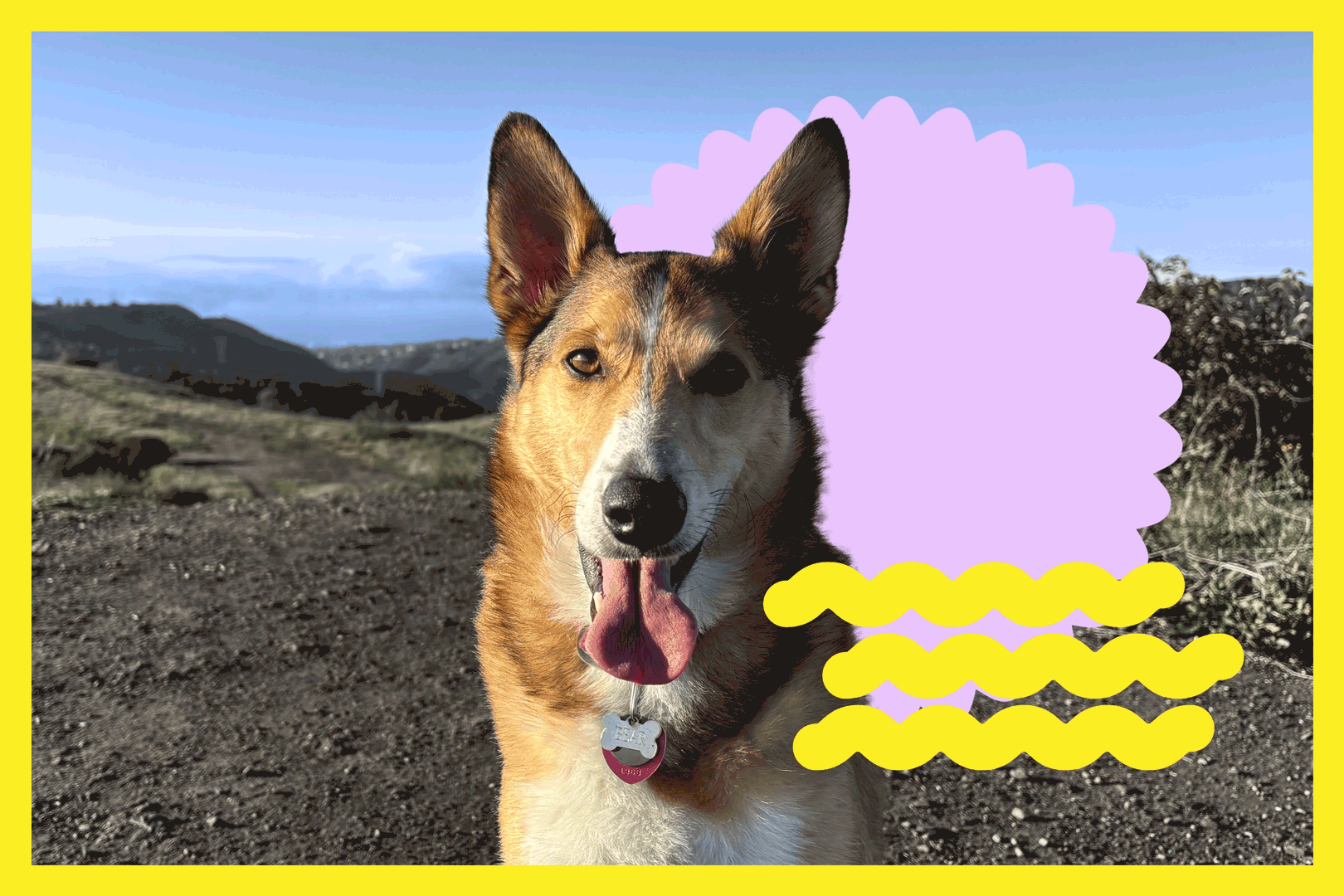7 essential tips to keep your pet healthy and happy in hot weather

- Share via
In the final months of summer, intensifying heat causes many of us to alter our daily routines. We wait until the cool air of the morning or evening to exercise, dust off our biggest water bottle and slather ourselves in SPF 75. But what about your furry friend, panting by your side?
Many pet owners are unaware that their pets can suffer from sunburn and other heat-related issues just like humans. At least 123 cats and dogs died from heat-related causes in 2023 in the U.S., according to the People for the Ethical Treatment of Animals.
As heat waves become more frequent and intense, it’s crucial to understand how to keep our beloved animals safe. We spoke to local experts about pet-safe sunscreens, heatstroke signs and other best practices to keep your pets safe during the heat wave. Here’s what they had to say:
Rita Earl Blackwell leverages Instagram to develop a community of helpers, from celebrities to good Samaritans who go the extra mile to save dogs from overcrowded Los Angeles shelters that euthanize for space.
1. Slather on sunscreen
“Pets, especially those with short hair, light-colored fur, or exposed skin, can get sunburned,” says Dr. Mellissa Jae, a veterinarian at Los Angeles County Department of Public Health. “It’s not just about discomfort. Sunburn can lead to skin cancer and other serious health issues in pets.”
You may be wondering: How do I know whether my cat’s or dog’s fur provides enough sun protection? Specific dog breeds at increased risk include chow chows, bulldogs, French bulldogs, dogue de Bordeaux, greyhounds, boxers, English springer spaniels, Cavalier King Charles spaniels, pugs, golden retrievers and Staffordshire bull terriers. Cat breeds at risk include those with thin or no fur coats, such as bambino, sphynx, Donskoy (Russian hairless) and Peterbald, according to Dr. Danielle DeMel, a critical care specialist from ACCESS Specialty Animal Hospital in Pasadena.
Even if your pet has luscious, protective locks, there may still be areas on their body that would benefit from sunscreen, namely those with less fur, like the nose, ears and belly, says Jae.
It’s important to use sunscreen specifically made for animals, Jae says, because most sunscreens for humans contain ingredients like zinc oxide and titanium dioxide that are toxic to pets if ingested. Pet-safe sunscreens, however, are formulated so that if your pet tries to lick the sunscreen off, the worst that can happen is they might get an upset stomach.
Summertime means spending time in the sun, and protecting yourself from harmful UV rays. Here are 10 myths about the pros and cons of using sunscreen.
“Look for sunscreens labeled safe for pets and pet owners should consult with their veterinarian,” says Jae.
DeMel suggests K-9 Care sunscreen. She notes that dogs and cats, unlike humans, do not convert the sun’s rays into vitamin D as humans do, so there is no benefit for any time in unprotected sun exposure for pets as it is for humans.
“Pet should be re-applied every two hours when the pet is out in the sun, to help ensure the best protection possible,” DeMel said via email.
DeMel adds that to prevent your pet from licking the sunscreen off after you apply it, as well as an added layer of sun protection, pet owners can dress their pets in a custom-made pet UPF 50 sunsuit, such as a K9TopCoat.
Owners still need to be careful, though, as this can add heat, even though the material is light.
“I would not recommend this as a tool to avoid heat stroke but these clothing items can help protect the skin from sun burn,” says DeMel.
Pet owners can also purchase bandannas, vests and hats for their pets as extra protection (and flair) while on walks, says Madeline Bernstein, president of the Society for the Prevention of Cruelty to Animals Los Angeles.
At these coffee shops, restaurant patios, markets, galleries and more, canine companions are greeted with excitement — and maybe even some special treats.
2. Look for signs of heatstroke
Understanding the symptoms of heatstroke can save your pet’s life. Early warning signs include heavy panting, lethargy, glazed eyes, rapid heartbeat, difficulty breathing, excessive thirst, staggering and bright-red gum color, says DeMel. Recognizing the early signs of heat-related illnesses and promptly addressing them can prevent serious complications.
“If you suspect a heatstroke, move your pet to a cooler area or use a hand fan on them, apply room temperature water to their body and contact your veterinarian immediately,” DeMel said. “If you don’t act promptly when a pet has a heatstroke, it can lead to kidney failure, lung injury and brain damage.”
DeMel says she has seen more severe heatstroke cases in pets this summer than in prior years, and warns that they can happen very quickly depending on environment and individual risk factors of a pet. For this reason, pet owners must never leave their pets in a car or confined space — even for just a few minutes.
“Bulldogs can become overheated in less than an hour and for some other dogs, it could happen within 10 minutes when they are exposed to extreme heat,” she said.
Celebrating its 10th anniversary, the Cat Art Show returns Jan. 19, bringing works from about 50 artists to Wallis Annenberg PetSpace in Playa Vista.
3. Keep them hydrated
Hydration is key during a heat wave. Temperatures above 80 degrees can be too hot for pets, said Bernstein.
“Pets can become dehydrated quickly, leading to heatstroke,” she added.
To prevent that from happening, have bowls in different areas of your home and yard and be sure to bring a portable bowl and a water bottle for your dog while on a walk. You could also add a few ice cubes to their water. Dogs require 60 to 80 milliliters of water per kilogram of body weight and cats require 40 to 60 milliliters of water per kilogram of body weight, according to Bernstein.
It is also important to ensure your outdoor doghouses have ventilation at all times, if not they can become a heat trap, Bernstein said.
Social media makes taking your feline family member on outdoor adventures look easy, but the reality is that it takes planning — and a cat that’s cool with it.
4. Avoid midday walks
The midday sun is the most intense between 10 a.m. and 3 p.m., making that the worst time for outdoor activities with pets.
“Make sure to shift routines as needed to keep your pet healthy and safe from the heat,” says Dr. Whitney Miller, chief veterinarian at Petco.
Adjust your schedule to walk your dog early in the morning or late in the evening, when temperatures are cooler. If you have an outdoor cat, consider keeping them inside during this window of time. Protective booties may help a pet feel more comfortable on walks.
Not sure if it’s too hot for your pet outside? Miller suggests an easy litmus test.
“If you are concerned about the ground being too hot, try touching it with your bare hands,” says Miller. “If you can’t hold your hand on the pavement for more than seven seconds, then it is too hot for animal paws.”
Try these dozen routes to make you — and your pup — happy hikers.
5. Groom them — but not too much
Regular haircuts can help prevent dogs from overheating, but don’t get overzealous.
“Grooming is important but pet owners should not shave the dog down to the skin, because then you’re asking for sunburn problems,” says Jae.
DeMel adds that long-haired cats can be shaved or get haircuts during the summer months if the indoor ambient temperature is high; however, if the cats are kept cool, this is often not needed, because most cats do not tolerate haircuts well without being sedated by a veterinarian.
Some breeds have fur that provides natural insulation against both heat and cold, she adds. Thick-coated breeds and those with double coats like chow chows, Alaskan huskies, and golden retrievers are better at conserving heat in cool temperatures.
“It is thought that double coats can also help the animal stay cool in hot temperatures as the undercoat usually stands upright and may allow improved air flow closer to the skin,” said DeMel. She suggests consulting with a veterinarian before grooming such breeds.
Westridge-Canyonback Wilderness Park provides a massive hiking space for dogs, leash optional.
6. Create a cool space
Indoors, ensure your pet has a cool place to retreat. This could be a room with air conditioning, a fan or even a cooling mat designed for pets. A sprinkler toy, freeze toy and bone-shaped ice mold are other great cooling options.
“If you don’t have air conditioning, consider placing ice packs wrapped in towels in your pet’s bed,” says Jae.
She recommends that L.A. pet owners call 211 if they’re looking for a pet-friendly cooling center nearby.
While inside, you can keep your pet entertained with puzzle toys, treat-dispensing toys and interactive games. This can help them burn energy without the risk of overheating.
“Mental stimulation can be just as tiring as physical exercise,” says Jae.
7. Know the peculiarities of your pet’s breed
Certain breeds are more prone to heat-related issues. All dogs can develop heatstroke, but some may be more at risk than others. Dogs that are overweight, flat-faced or more energetic have a higher chance of developing heatstroke, and the same dog and cat breeds that are at risk of being sunburned may also be at greater risk of a heatstroke.
“These breeds need extra care during heat waves,” says DeMel. “Keep them in cool environments as much as possible and monitor them closely for any signs of distress.”
More to Read
Sign up for The Wild
We’ll help you find the best places to hike, bike and run, as well as the perfect silent spots for meditation and yoga.
You may occasionally receive promotional content from the Los Angeles Times.


















